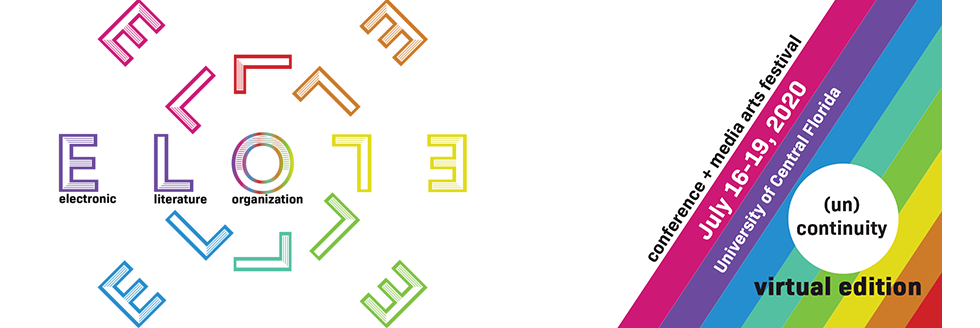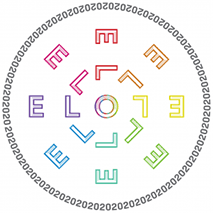Proposal Title
From AI with Love: Reading Big Data Poetry through Gilbert Simondon’s Theory of Transduction
Loading...
Submission Type
Conference Proceedings Paper
Abstract
Computation initiated a far-reaching re-imagination of language, not just as an information tool, but as a social, bio-physical activity in general. Modern lexicology provides an important overview of the ongoing development of textual documentation and its applications in relation to language and linguistics. At the same time, the evolution of lexical tools from the first dictionaries and graphs to algorithmically generated scatter plots of live online interaction patterns has been surprisingly swift. Modern communication and information studies from Norbert Weiner to the present-day support direct parallels between coding and linguistic systems. However, most theories of computation as a model of language use remain highly indefinite and open-ended, at times purposefully ambiguous. Comparing the use of computation and semantic technologies ranging from Christopher Strachey’s early love letter templates to David Jhave Johnson’s more recent experiments with artificial neural networks (ANNs), this paper proposes the philosopher Gilbert Simondon’s theory of transduction and metastable systems as a suitable framework for understanding various ontological and epistemological ramifications in our increasingly complex and intimate interactions with machine learning. Such developments are especially clear, I argue, in the poetic reimagining of language as a space of cybernetic hybridity.
initiated a far-reaching re-imagination of language, not just as an information tool, but as a social, bio-physical activity in general. Modern lexicology provides an important overview of the ongoing development of textual documentation and its applications in relation to language and linguistics. At the same time, the evolution of lexical tools from the first dictionaries and graphs to algorithmically generated scatter plots of live online interaction patterns has been surprisingly swift. Modern communication and information studies from Norbert Weiner to the present-day support direct parallels between coding and linguistic systems. However, most theories of computation as a model of language use remain highly indefinite and open-ended, at times purposefully ambiguous. Comparing the use of computation and semantic technologies ranging from Christopher Strachey’s early love letter templates to David Jhave Johnson’s more recent experiments with artificial neural networks (ANNs), this paper proposes the philosopher Gilbert Simondon’s theory of transduction and metastable systems as a suitable framework for understanding various ontological and epistemological ramifications in our increasingly complex and intimate interactions with machine learning. Such developments are especially clear, I argue, in the poetic reimagining of language as a space of cybernetic hybridity.
Keywords: Artificial Intelligence, Poetics, Neural Networks, Information Studies, Computation, Linguistics, Transduction, Philosophy
Included in
Artificial Intelligence and Robotics Commons, Communication Technology and New Media Commons, Digital Humanities Commons, Linguistics Commons
From AI with Love: Reading Big Data Poetry through Gilbert Simondon’s Theory of Transduction
Computation initiated a far-reaching re-imagination of language, not just as an information tool, but as a social, bio-physical activity in general. Modern lexicology provides an important overview of the ongoing development of textual documentation and its applications in relation to language and linguistics. At the same time, the evolution of lexical tools from the first dictionaries and graphs to algorithmically generated scatter plots of live online interaction patterns has been surprisingly swift. Modern communication and information studies from Norbert Weiner to the present-day support direct parallels between coding and linguistic systems. However, most theories of computation as a model of language use remain highly indefinite and open-ended, at times purposefully ambiguous. Comparing the use of computation and semantic technologies ranging from Christopher Strachey’s early love letter templates to David Jhave Johnson’s more recent experiments with artificial neural networks (ANNs), this paper proposes the philosopher Gilbert Simondon’s theory of transduction and metastable systems as a suitable framework for understanding various ontological and epistemological ramifications in our increasingly complex and intimate interactions with machine learning. Such developments are especially clear, I argue, in the poetic reimagining of language as a space of cybernetic hybridity.
initiated a far-reaching re-imagination of language, not just as an information tool, but as a social, bio-physical activity in general. Modern lexicology provides an important overview of the ongoing development of textual documentation and its applications in relation to language and linguistics. At the same time, the evolution of lexical tools from the first dictionaries and graphs to algorithmically generated scatter plots of live online interaction patterns has been surprisingly swift. Modern communication and information studies from Norbert Weiner to the present-day support direct parallels between coding and linguistic systems. However, most theories of computation as a model of language use remain highly indefinite and open-ended, at times purposefully ambiguous. Comparing the use of computation and semantic technologies ranging from Christopher Strachey’s early love letter templates to David Jhave Johnson’s more recent experiments with artificial neural networks (ANNs), this paper proposes the philosopher Gilbert Simondon’s theory of transduction and metastable systems as a suitable framework for understanding various ontological and epistemological ramifications in our increasingly complex and intimate interactions with machine learning. Such developments are especially clear, I argue, in the poetic reimagining of language as a space of cybernetic hybridity.
Keywords: Artificial Intelligence, Poetics, Neural Networks, Information Studies, Computation, Linguistics, Transduction, Philosophy




Bio
Andrew Klobucar, Associate Professor of English at New Jersey Institute of Technology in New Jersey is a literary theorist and teacher, specializing in internet research, electronic literature, and semantic technologies. His writings on experimental literary forms and genres continue to analyze the increasingly important role technology plays in contemporary cultural practices in both print and screen formats. He has worked on developing software for writing instruction and written on the use of programmable media in classroom instruction. His book The Algorithmic Impulse: Programmable Writing and the Aesthetics of Information is forthcoming